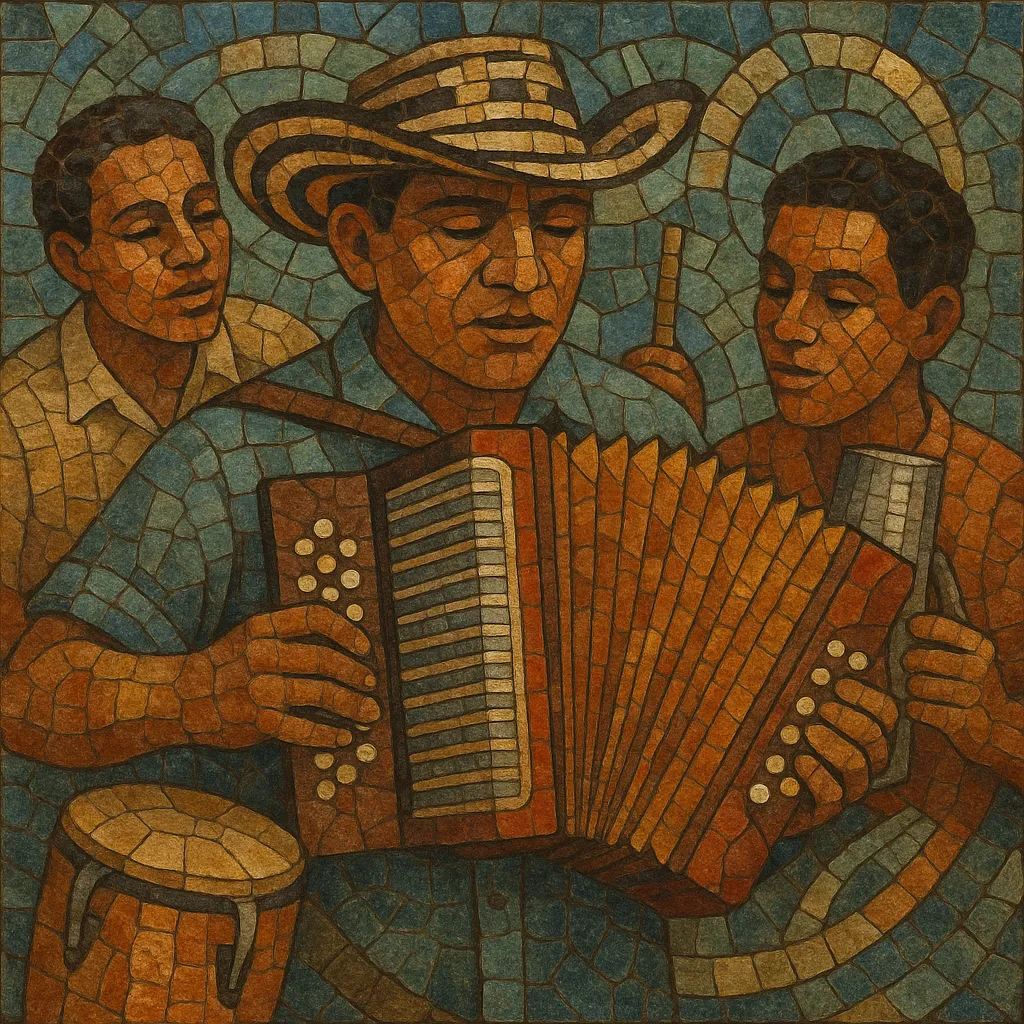Vallenato is a traditional folk-pop genre from Colombia’s Caribbean region that centers on storytelling and danceable rhythms. Its signature sound comes from a trio: the diatonic button accordion (melody and riffs), the caja vallenata (a small, single-headed drum providing punchy accents), and the guacharaca (a ribbed scraper driving the groove).
Classic vallenato is organized into four main aires (rhythmic-feel types): paseo (lyrical and versatile), merengue (not to be confused with the Dominican genre; it is brisk and bouncy), puya (the fastest and most virtuosic), and son (the slowest, deeply expressive and sentimental). Themes often revolve around love, everyday life, travel, and regional identity, delivered through vivid narrative verses and memorable choruses.
Over time, vallenato has absorbed elements of cumbia, porro, son cubano, and bolero, and it has also blended with pop and rock to create modern variants. In 2015, UNESCO recognized the “Traditional Vallenato music of the Greater Magdalena region” as Intangible Cultural Heritage in need of safeguarding, underscoring both its cultural importance and the need to preserve its roots.
Vallenato emerged in Colombia’s Caribbean hinterlands (notably La Guajira and Cesar) as itinerant musicians carried news and stories from town to town. The arrival of the diatonic button accordion (via maritime trade) fused with local Afro-Indigenous percussion practices and Spanish song traditions. By the early 1900s, the core trio—accordion, caja vallenata, and guacharaca—had coalesced, and four aires (paseo, merengue, puya, son) provided distinct rhythmic and expressive frameworks.
As radio and recording expanded, early masters like Alejo Durán and Emiliano Zuleta codified repertoire and technique. The music migrated from rural patios to urban festivals and dance halls, maintaining its narrative character and danceable pulse. Stylistic cross-pollination with cumbia, porro, and son cubano enriched harmony, bass lines, and percussion.
Vallenato reached national prominence through stars such as Jorge Oñate, Diomedes Díaz, and Rafael Orozco (Binomio de Oro). Bands added electric bass, congas, and guitars, refining arrangements without losing the central accordion-led identity. The Festival de la Leyenda Vallenata (founded in 1968) became a key institution, elevating virtuoso accordion competition and repertoire.
The 1990s ushered in a more romantic and polished sound, sometimes called “vallenato romántico,” and pop-rock fusions spearheaded by artists like Carlos Vives introduced the genre to international audiences. Recording technology and music videos amplified its reach across Latin America and beyond.
UNESCO’s 2015 inscription of traditional vallenato underscored the need to protect foundational practices, styles, and repertories. Meanwhile, contemporary artists (e.g., Silvestre Dangond, Peter Manjarrés) balance tradition with modern production, occasionally collaborating with pop and urbano acts, ensuring vallenato remains both rooted and current.


